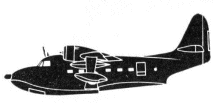Incident Overview

Description
EgyptAir Flight 843, a Boeing 737-500, departed Cairo at 13:40 for a flight to Tunis. At 15:00 hours local time the aircraft was cleared for a VOR/DME approach to runway 11 at Tunis-Carthage Airport. The flight crew did not conduct a verbal approach briefing prior to or during the descent. The approach procedure stipulates that the aircraft must cross the Initial Approach Fix (IF), located at 11 DME, at 2100 feet. This altitude has to be maintained to the Final Approach Fix (FAF) at 6 DME. However, flight 843 began the descent prematurely while still at 6.8 DME. During the final approach there was no verbal mention of the 1000 ft passage. Descent was continued through clouds until the aircraft impacted the side of a hill at 750 feet, 6,6 km short of the runway. The aircraft was not equipped with an EGPWS. The investigation determined that an EGPWS would have give a “Caution Terrain” warning 32 seconds before the impact, followed by “Terrain, terrain. Pull up, pull up” three seconds later. Cause of the accident: The accident resulted from the crew’s failure to execute and control the final approach. This was evidenced by the failure to respect the approach fix associated with the decision to begin the final approach prematurely. Contributing to the accident were the following factors: – The adverse weather conditions at the time of the accident, including reduced visibility; – The shortcomings noted in the training of both pilots, particularly those relating to conventional VOR/DME approaches; – The relative weakness of the flight experience of the two crew members on the aircraft type being operated.
Primary Cause
Crew error ? failure to execute and control the final approach, resulting in premature descent and deviation from the planned trajectory.Crew error ? failure to execute and control the final approach, resulting in premature descent and deviation from the planned trajectory.Share on:





